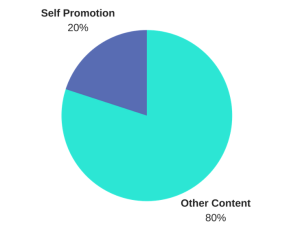Amidst the low quality selfies, hilarious pet videos, and mouth-watering cooking tutorials, social media users in recent years have found a new kind of post on their feeds. This post, if done right, simultaneously advertises and entertains, capturing the user’s brand loyalty as well as their spending dollars. Brands, realizing the opportunities that come with social media, have pounced on the chance to put their products or services directly in their customers’ news feeds. With 78% of consumers relying on companies’ social media posts to help them make purchasing decisions, according to a study done by Forbes, it’s not all that surprising that people would choose to mix their social sharing and shopping research on the same platform. But what compels a user to follow a brand in the first place?
Why do people follow brands? Incentives
As much as we’d like to think that consumers are following our page for a good laugh or the informational content we spend hours producing, it turns out there is a little more to it. Before they can become a loyal and engaged user, there has to be good reason for them to click the “follow” button. A whopping 56% of social media users surveyed by MarketingSherpa said they originally followed brands to see promotions or coupons regularly. In a similar vein, 44% said they followed to enter a contest, get a discount, or win a gift card. Evidently, many are most interested in what companies have to offer them.
Incentives really serve two purposes. First, they attract new users to follow your account, buy your products, or (ideally) both. Second, they keep loyal customers coming back again and again – an equally important task. Discounts or promotions serve as reminders to consumers, positioning your brand at the top of their minds.
Why do people follow brands? Content
According to the same Marketing Sherpa survey, less than half of all consumers (38%) follow a brand for their informational content. Those how-to posts, reviews, and tip sheets you slave over? Apparently they’re not as alluring as the twenty-percent-off coupon that takes you a few minutes to throw together. Even fewer (31%) follow for entertaining content such as funny videos, memes, or bits of pop culture. But don’t let this discourage you, as informational or entertaining content serves its own purpose in attracting and keeping the right customer. As we discussed in our 80/20 Rule of Content Marketing post, all of your social media efforts are in vain if you are not aware of and catering to your target market. While a discount will get you a new follower, your content is ultimately what will determine whether or not they stick around after the promotion is over.
Good content is what turns your brand’s account from a bulletin board of coupons to a social page where users can stay engaged.
♦♦♦
In the delicious and complicated soup that is social media marketing, it’s important to remember that each ingredient gives your social platform a different flavor. Pushing out too many incentives can make your brand seem impersonal, but too much informational or entertaining content might allow customers to forget that you have something to sell them. Striking a balance between the two gives you the best chance of accomplishing the dual goal of attracting a large following and keeping them coming back for more.














